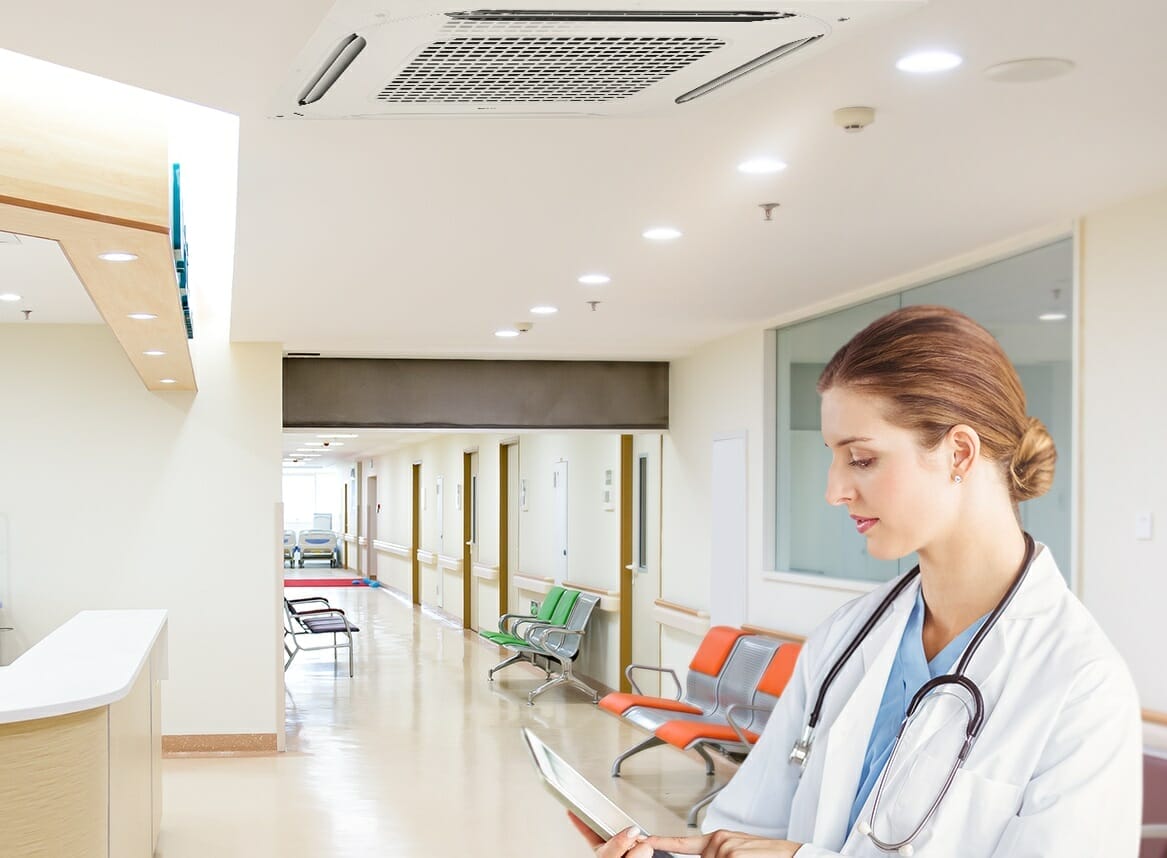HVAC Systems
The pandemic has overwhelmed every sector, yet none more so than healthcare. According to an IBISWorld report, in Australia, less than 20% of public hospitals are equipped with a specialized Intensive Care Unit (ICU), required for managing the welfare of the most critically-ill patients. NHS England also confirmed that up to 20% of affected patients in several hospitals caught COVID-19 at the hospital, while being treated for other diseases.
The pandemic has undoubtedly led to an increasing number of people becoming more aware of not only airborne respiratory illnesses, but also the critical role of hospital care and its ability to meet demand. The pandemic posed a significant challenge for healthcare facilities, and while mainly prevailed, it is evident that changes must be made.
What will healthcare facilities be like after the pandemic and how can hospitals prepare for the new normal?

Spatial changes and the rise of telehealth
Increasing adoption of telehealth will accelerate change in space use. According to a survey by McKinsey, US consumer adoption of telehealth skyrocketed from 11% in 2019 to 46% during the pandemic. Updox, a virtual care communication company, found that out of 2,000 U.S. adults, 51% would continue using telehealth services even after the pandemic.
A secondary spatial change being made is the expanded rollout of negative pressure rooms. Building negative pressure rooms is one method by which healthcare facilities are transforming themselves into pandemic-ready zones. A negative pressure room can keep the inside-air pressure lower than the surrounding environment to isolate virus and reduce the risk of infection.
Hospital General de Latacunga in Ecuador, for example, has a negative pressure room equipped with LG Electronics’ (LG) solutions which allow effective zone pressure control. Multi V, LG’s Variable Refrigerant Flow (VRF) system is connected with an Air Handling Unit (AHU), fitted with a high-efficiency particulate air (HEPA) filter that removes 99.97% of all airborne particles down to 0.3μm in size with MERV 17, conforming to global standards. This combination re-conditions and circulates air, maintaining the most stringently hygienic environment.

Changes in management priorities
Similarly, transformation in terms of management is also required. Indoor air quality, which has typically been a top priority for healthcare facilities is further emphasized in light of the pandemic. The American Society of Heating, Refrigerating and Air-Conditioning Engineers (ASHRAE) argues that changes to building operations, including the operation of heating, ventilating, and air-conditioning systems, can reduce airborne exposure to the virus.
That is why hospital air conditioning plays a more pivotal role than merely promoting comfort. An effective HVAC systems not only provides comfortable temperature and humidity, but also collects pollutants and draw air through a filtering element. LG’s Multi V indoor units are equipped with 4-step air purification filter, which removes up to 99.9% PM 1.0 ultrafine dust, ensuring hygienic indoor air quality.
Improving cost-efficiency is another challenge healthcare facilities have faced, managing buildings while experiencing unprecedented financial fallout. The American Hospital Association estimated that within the four-month period of March to June 2020 alone, financial impacts would result in a staggering loss of $202.6 billion.

To reduce operational costs, maximizing energy efficiency is key to healthcare facilities, which are required to operate 24 hours a day, 365 days a year. According to the U.S. Department of Energy, their energy use intensity is 2.5 times greater than commercial office buildings.
LG Electronics is working to deliver best-in-class energy efficiency through its innovative HVAC technologies. LG’s Multi V 5, which is its latest VRF system, has an Ultimate Inverter Compressor with increased cooling efficiency by 3% and heating efficiency by 10%, when compared to the conventional HVAC systems. Its smart feature of sensing the presence of person to turn on and off automatically also contributes towards optimum energy use.
“LG Electronics offers optimal HVAC systems and solutions for healthcare facilities facing today’s challenges. We believe that our solutions have the ability to assist facility owners and healthcare professionals to better aid their road to recovery and prepare for the new normal,” said Mr. Suraj Kumar, Technical Manager – Air Solutions, LG Electronics Gulf. “We are closely monitoring the direction the healthcare industry is headed in, in order to proactively offer products that guarantee exceptional comfort, as well as energy-efficiency and peace-of-mind.”












